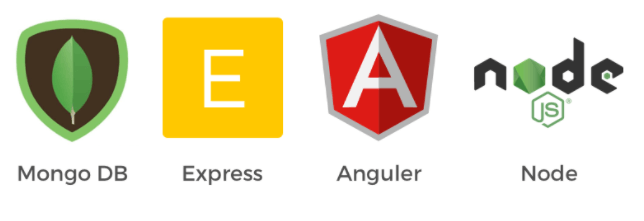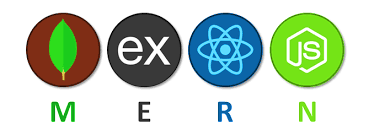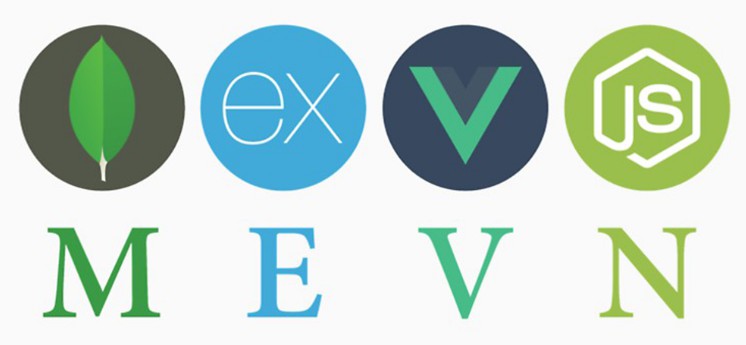Uncategorized
How to Choose the Right Tech Stack for Your Startup
Building your own startup is exciting, but you will be faced with many critical decisions. One of which is choosing the right technology to power your product.
The tech stack directly affects your time to market, your app’s performance, and how quickly it can scale as your startup grows. And with so many technologies available and that many more emerging, it can be an overwhelming decision.
My goal is to make this process a little bit easier for you and get you one step closer to picking what’s best for your business.
The tech stack explained
A tech stack is the combination of technologies used to develop a web or mobile app, including programming languages, frameworks, libraries, and databases.
Your choice of tech stack will determine what kind of application you can build (a simple landing page, a functional web app, or a complex web or mobile application), the level of functionality and customization, speed, and of course development cost.
The tech stack consists of different layers that work together with each serving a specific purpose. A tech stack typically consists of the following layers:
- Front-end: This layer focuses on the user interface and user experience – everything the user sees and interacts with. It uses technologies like HTML, CSS, and JavaScript, and frameworks and libraries like React, Angular, or Vue.js.
- Back-end: The back-end layer handles the server-side operations and logic – in other words what happens behind the scenes that users don’t see. Some back-end technologies include Python, Ruby, Java, or Node.js, and frameworks like Django, Ruby on Rails, Spring, or Express.js.
- Database: The database layer is responsible for storing and retrieving data. There are different types of databases, such as relational databases like MySQL or PostgreSQL, NoSQL databases like MongoDB or Cassandra, or in-memory databases like Redis.
The front-end communicates with the back-end through APIs (Application Programming Interfaces), which enable data exchange and functionality integration. The back-end interacts with the database to store, retrieve, and manipulate data as needed.
What does this mean for your startup?
Think of the tech stack as the foundation of a building. If your foundation is weak, this would impact the long-term longevity and durability of the building. And you will find yourself spending unnecessary time and resources on repairs and maintenance. On top of that, you’ll also have a lot of unhappy tenants on your hands.
In a similar way, the tech stack you choose can significantly impact your product’s performance and scalability. It needs to be able to handle user load and scale as your startup grows, providing a smooth and seamless user experience.
With that said, it’s also worth pointing out that even if you choose the perfect tech stack and most solid infrastructure for your product, it doesn’t mean your startup is immune to failure. While the technology is important, it’s just one part of the equation.
Popular tech stacks
MEAN Stack:

- MongoDB: NoSQL database known for its flexibility and scalability.
- Express.js: Lightweight and flexible web application framework for Node.js.
- Angular: Comprehensive front-end framework for building dynamic and robust web applications.
- Node.js: Back-end JavaScript environment, known for its scalability and asynchronous event-driven architecture.
Strengths: Enables full-stack JavaScript development, efficient for real-time applications, supports rapid prototyping, and has a large developer community.
Weaknesses: Steep learning curve, requires careful planning for scalability and performance in complex applications.
MERN Stack:

- MongoDB
- Express.js
- React: Popular JavaScript front-end library for building user interfaces.
- Node.js
The MERN stack is very similar to the MEAN with the difference that Angular is swapped for React. Since it uses Virtual DOM, React tends to be more lightweight and benefits from increased speed and performance.
Strengths: Allows for full-stack JavaScript development, efficient for building single-page applications, and has a large and active developer community.
Weaknesses: Steep learning curve, limited core functionality and SEO support for single-page applications.
The MEVN stack

- MongoDB
- Express.js
- Vue.js: JavaScript front-end framework for building user interfaces and single-page applications
- Node.js
Another version of the MEAN stack where Vue.js replaces Angular. This front-end framework has gained traction in recent years due to it being more lightweight than Angular. Many view it as the best of both worlds between React and Angular as it offers great performance and flexibility.
LAMP Stack:
- Linux: Open-source operating system that serves as the foundation.
- Apache: Web server software widely used for hosting websites.
- MySQL: Relational database management system known for its stability and performance.
- PHP: Server-side scripting language suitable for web development.
Strengths: Cost-effective and widely supported with a proven track record for building web applications.
Weaknesses: May have performance limitations under high traffic loads, perceived as less scalable compared to newer tech stacks.
Flutter
Flutter is an open-source user interface toolkit developed by Google. It enables cross-platform development, meaning that you can build an application that works across multiple platforms – mobile, web, and desktop, using a single codebase.
With Flutter developers write the code once and deploy it to iOS, Android, macOS, Windows, etc. This greatly reduces development cost, time to market and other resources relating to app maintenance. It also offers fast and smooth performance, and native-like experience.
How to choose the right tech stack
- Define Your Project Requirements: Consider factors such as the type of application you’re building (web, mobile, or both), expected user traffic, scalability needs, and the complexity of the features you need to implement. Conducting a discovery phase is crucial when you’re first defining the problem space as this will guide your choice of technology.
- Consider Time to Market: Heard of the first mover advantage? Getting to market before your competitors can potentially help you capture more market share. That’s why an important consideration for a tech stack is development speed. Some frameworks offer rapid development capabilities, allowing you to build and launch your product quickly. However, make sure that you don’t compromise performance in the meantime.
- Evaluate Third-Party Integrations: Some tech stacks have better support and seamless integrations with specific services or APIs. Evaluate whether the tech stack supports the necessary third-party integrations to meet your functional requirements.
- Test & Iterate: Before committing to a specific tech stack, consider building an interactive prototype or an MVP (minimum viable product). This way you can validate its feasibility and performance in the context of your requirements, and improve as needed. These findings can impact what technology you choose for the final product.
- Consider Development Cost: Evaluate the availability of skilled developers for each tech stack, as their rates may vary based on demand and expertise. Additionally, take into account the cost of infrastructure, hosting, and ongoing maintenance.
- Use Your Team’s Strengths: Choosing a tech stack that aligns with your development team’s knowledge and experience can accelerate development and reduce the learning curve. However, be open to exploring new technologies if they offer significant advantages for your project.
- Think Long-Term: Evaluate how well the tech stack can handle anticipated growth in user load and data volume over time. A scalable tech stack will be able to grow and adapt with your startup as user demand increases.
Takeaway
Not only does the tech stack determine whether your product can meet user demand, but it can also show potential co-founders and investors that your startup has a solid and reliable infrastructure.
It’s definitely not a decision to be taken lightly. Make sure you look at it from every angle and find someone who can offer expert advice and technical recommendations to help you figure out what might work best in your unique situation.
Credit: Article by David Stellini on startupnation.com


